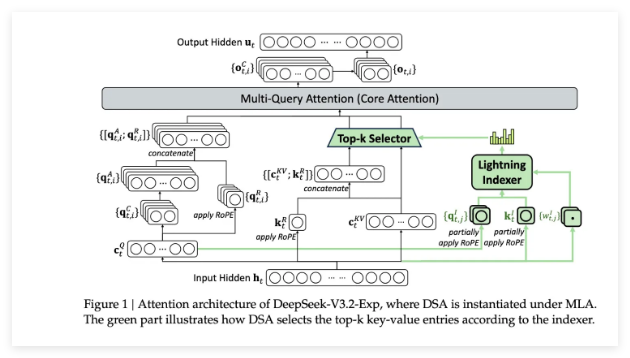文章目录
学习目标:如何使用whisper 学习内容一:whisper 转文字 1.1 使用whisper.load_model()方法下载,加载 1.2 使用实例对文件进行转录 1.3 实战 学习内容二:语者分离(pyannote.audio)pyannote.audio是huggingface开源音色包 第一步:安装依赖 第二步:创建key 第三步:测试pyannote.audio 学习内容三:整合学习目标:如何使用whisper
学习内容一:whisper 转文字
1.1 使用whisper.load_model()方法下载,加载
model=whisper.load_model(参数) ~/.cache/whisper in_memory: 是否将模型权重预加载到主机内存中 返回值
model : Whisper
Whisper语音识别模型实例
def load_model( name: str, device: Optional[Union[str, torch.device]] = None, download_root: str = None, in_memory: bool = False, ) -> Whisper: """ Load a Whisper ASR model Parameters ---------- name : str one of the official model names listed by `whisper.available_models()`, or path to a model checkpoint containing the model dimensions and the model state_dict. device : Union[str, torch.device] the PyTorch device to put the model into download_root: str path to download the model files; by default, it uses "~/.cache/whisper" in_memory: bool whether to preload the model weights into host memory Returns ------- model : Whisper The Whisper ASR model instance """ if device is None: device = "cuda" if torch.cuda.is_available() else "cpu" if download_root is None: default = os.path.join(os.path.expanduser("~"), ".cache") download_root = os.path.join(os.getenv("XDG_CACHE_HOME", default), "whisper") if name in _MODELS: checkpoint_file = _download(_MODELS[name], download_root, in_memory) alignment_heads = _ALIGNMENT_HEADS[name] elif os.path.isfile(name): checkpoint_file = open(name, "rb").read() if in_memory else name alignment_heads = None else: raise RuntimeError( f"Model {name} not found; available models = {available_models()}" ) with ( io.BytesIO(checkpoint_file) if in_memory else open(checkpoint_file, "rb") ) as fp: checkpoint = torch.load(fp, map_location=device) del checkpoint_file dims = ModelDimensions(**checkpoint["dims"]) model = Whisper(dims) model.load_state_dict(checkpoint["model_state_dict"]) if alignment_heads is not None: model.set_alignment_heads(alignment_heads) return model.to(device) 1.2 使用实例对文件进行转录
result = model.transcribe(file_path)
def transcribe( model: "Whisper", audio: Union[str, np.ndarray, torch.Tensor], *, verbose: Optional[bool] = None, temperature: Union[float, Tuple[float, ...]] = (0.0, 0.2, 0.4, 0.6, 0.8, 1.0), compression_ratio_threshold: Optional[float] = 2.4, logprob_threshold: Optional[float] = -1.0, no_speech_threshold: Optional[float] = 0.6, condition_on_previous_text: bool = True, initial_prompt: Optional[str] = None, word_timestamps: bool = False, prepend_punctuations: str = "\"'“¿([{-", append_punctuations: str = "\"'.。,,!!??::”)]}、", **decode_options, ): """ 将音频转换为文本。 参数: - model: Whisper模型 - audio: 音频文件路径、NumPy数组或PyTorch张量 - verbose: 是否打印详细信息,默认为None - temperature: 温度参数,默认为(0.0, 0.2, 0.4, 0.6, 0.8, 1.0) - compression_ratio_threshold: 压缩比阈值,默认为2.4 - logprob_threshold: 对数概率阈值,默认为-1.0 - no_speech_threshold: 无语音信号阈值,默认为0.6 - condition_on_previous_text: 是否根据先前的文本进行解码,默认为True - initial_prompt: 初始提示,默认为None - word_timestamps: 是否返回单词时间戳,默认为False - prepend_punctuations: 前缀标点符号,默认为"\"'“¿([{-" - append_punctuations: 后缀标点符号,默认为"\"'.。,,!!??::”)]}、" - **decode_options: 其他解码选项 返回: - 转录得到的文本 """ 1.3 实战
建议load_model添加参数
download_root:下载的根目录,默认使用~/.cache/whispertranscribe方法添加参数 word_timestamps=True
import whisper import arrow # 定义模型、音频地址、录音开始时间 def excute(model_name,file_path,start_time): model = whisper.load_model(model_name) result = model.transcribe(file_path,word_timestamps=True) for segment in result["segments"]: now = arrow.get(start_time) start = now.shift(seconds=segment["start"]).format("YYYY-MM-DD HH:mm:ss") end = now.shift(seconds=segment["end"]).format("YYYY-MM-DD HH:mm:ss") print("【"+start+"->" +end+"】:"+segment["text"]) if __name__ == '__main__': excute("large","/root/autodl-tmp/no/test.mp3","2022-10-24 16:23:00") 学习内容二:语者分离(pyannote.audio)pyannote.audio是huggingface开源音色包
第一步:安装依赖
pip install pyannote.audio 第二步:创建key
https://huggingface.co/settings/tokens
第三步:测试pyannote.audio
创建实例:Pipeline.from_pretrained(参数) 使用GPU加速:import torch # 导入torch库pipeline.to(torch.device(“cuda”)) 实例转化音频pipeline(“test.wav”)
from_pretrained(参数)
cache_dir:路径或str,可选模型缓存目录的路径。默认/pyannote"当未设置时。pipeline(参数)
file_path:录音文件 num_speakers:几个说话者,可以不带 from pyannote.audio import Pipeline pipeline = Pipeline.from_pretrained("pyannote/speaker-diarization@2.1", use_auth_token="申请的key") # send pipeline to GPU (when available) import torch device='cuda' if torch.cuda.is_available() else 'cpu' pipeline.to(torch.device(device)) # apply pretrained pipeline diarization = pipeline("test.wav") print(diarization) # print the result for turn, _, speaker in diarization.itertracks(yield_label=True): print(f"start={turn.start:.1f}s stop={turn.end:.1f}s speaker_{speaker}") # start=0.2s stop=1.5s speaker_0 # start=1.8s stop=3.9s speaker_1 # start=4.2s stop=5.7s speaker_0 # ... 学习内容三:整合
这里要借助一个开源代码,用于整合以上两种产生的结果
报错No module named 'pyannote_whisper'
如果你使用使用AutoDL平台,你可以使用学术代理加速
source /etc/network_turbo git clone https://github.com/yinruiqing/pyannote-whisper.git cd pyannote-whisper pip install -r requirements.txt
这个错误可能是由于缺少或不正确安装了所需的 sndfile 库。sndfile 是一个用于处理音频文件的库,它提供了多种格式的读写支持。
你可以尝试安装 sndfile 库,方法如下:
在 Ubuntu 上,使用以下命令安装:sudo apt-get install libsndfile1-dev
在 CentOS 上,使用以下命令安装:sudo yum install libsndfile-devel
在 macOS 上,使用 Homebrew 安装:brew install libsndfile
然后重新执行如上指令
在项目里面写代码就可以了,或者复制代码里面的pyannote_whisper.utils模块代码
import os import whisper from pyannote.audio import Pipeline from pyannote_whisper.utils import diarize_text import concurrent.futures import subprocess import torch print("正在加载声纹模型") pipeline = Pipeline.from_pretrained("pyannote/speaker-diarization@2.1",use_auth_token="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") output_dir = '/root/autodl-tmp/no/out' print("正在whisper模型") model = whisper.load_model("large", device="cuda") # MP3转化为wav def convert_to_wav(path): new_path = '' if path[-3:] != 'wav': new_path = '.'.join(path.split('.')[:-1]) + '.wav' try: subprocess.call(['ffmpeg', '-i', path, new_path, '-y', '-an']) except: return path, 'Error: Could not convert file to .wav' else: new_path = '' return new_path, None def process_audio(file_path): file_path, retmsg = convert_to_wav(file_path) print(f"===={file_path}=======") asr_result = model.transcribe(file_path, initial_prompt="语音转换") pipeline.to(torch.device('cuda')) diarization_result = pipeline(file_path, num_speakers=2) final_result = diarize_text(asr_result, diarization_result) output_file = os.path.join(output_dir, os.path.basename(file_path)[:-4] + '.txt') with open(output_file, 'w') as f: for seg, spk, sent in final_result: line = f'{seg.start:.2f} {seg.end:.2f} {spk} {sent}\n' f.write(line) if not os.path.exists(output_dir): os.makedirs(output_dir) wave_dir = '/root/autodl-tmp/no' # 获取当前目录下所有wav文件名 wav_files = [os.path.join(wave_dir, file) for file in os.listdir(wave_dir) if file.endswith('.mp3')] # 处理每个wav文件 # with concurrent.futures.ThreadPoolExecutor(max_workers=1) as executor: # executor.map(process_audio, wav_files) for wav_file in wav_files: process_audio(wav_file) print('处理完成!') 


















